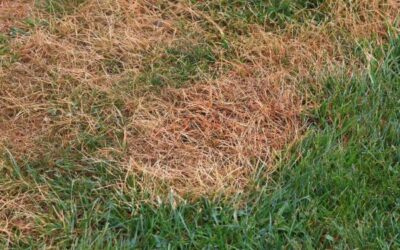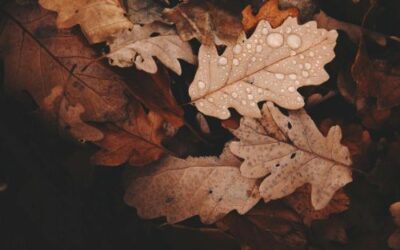Winter can be a challenging season for lawns and gardens, as cold temperatures, frost, and snow can cause significant damage to plants, soil, and landscaping structures. With proper preparation and care, however, you can minimize the impact of winter weather and help your lawn and garden thrive when spring arrives. Here’s a comprehensive guide on how to prevent winter damage to your lawn and garden.
1. Understanding Common Winter Damage
Winter can affect your lawn and garden in several ways, primarily due to freezing temperatures, frost, and the weight of snow. Some of the most common types of winter damage include:
- Frost Heave: When soil freezes and thaws repeatedly, it expands and contracts, causing plant roots to lift out of the ground. This process, known as frost heave, can damage the roots of perennials and shrubs.
- Snow Mold: Snow mold is a fungal disease that thrives under snow cover and affects grasses. It appears as gray or pink patches on the lawn when the snow melts.
- Desiccation: Dry, cold winds can dry out plants, particularly evergreens, leading to winter burn or browning of foliage.
- Salt Damage: Salt from de-icing roads and pathways can seep into the soil, affecting plant health.
- Animal Damage: Rodents and deer may turn to garden plants for food during winter, potentially damaging trees and shrubs.
By understanding these potential issues, you can take preventive steps to protect your lawn and garden from winter’s challenges.
2. Protecting Plants from Frost Heave
One of the most critical steps to preventing frost heave is mulching. Mulch helps insulate the soil and prevents it from freezing and thawing repeatedly. Here’s how to use mulch effectively:
- Apply a Layer of Mulch: In late fall, add a layer of mulch, about 2-4 inches thick, around the base of perennials and shrubs. This layer helps regulate soil temperature and reduces the risk of frost heave.
- Choose the Right Mulch: Organic mulches, such as shredded bark, straw, or wood chips, work best for insulation and will decompose over time, adding nutrients to the soil.
- Avoid Mulch Piling: Keep mulch a few inches away from plant stems to prevent mold growth and rot. Mulch should act as a blanket for the soil rather than touching the plants themselves.
3. Preventing Snow Mold in Lawns
Snow mold can damage a lawn, particularly if heavy snow covers it for extended periods. To minimize snow mold:
- Keep Grass Short in Late Fall: Before the first snow, mow your lawn to about 2-2.5 inches. This height is ideal because it reduces the chance of fungal growth while still protecting the grass.
- Rake Leaves and Debris: Ensure that leaves and debris are cleared from the lawn before winter. Snow mold thrives under matted leaves, so a clean lawn helps minimize the risk.
- Avoid Excessive Nitrogen Fertilizers in Fall: High-nitrogen fertilizers promote lush growth, which can be more susceptible to snow mold. Use a balanced fertilizer in late fall instead.
- Aerate the Soil: Aeration promotes drainage, which reduces excess moisture, thereby minimizing conditions where snow mold could develop.
4. Minimizing Desiccation in Evergreens
Winter burn, or desiccation, occurs when evergreens lose moisture faster than they can absorb it, leading to browning or needle loss. Here’s how to protect evergreens from desiccation:
- Water Thoroughly Before Winter: Give evergreens a deep watering in late fall before the ground freezes. This helps ensure that they have adequate moisture to withstand the dry winter months.
- Apply Anti-Desiccant Spray: An anti-desiccant spray creates a protective layer over foliage, reducing moisture loss. Apply this spray in late fall and reapply as recommended on the product label.
- Use Burlap Covers: For young or sensitive evergreens, set up burlap screens around them to shield from harsh winter winds. Place stakes around the plant and attach the burlap, leaving space for air circulation.
5. Avoiding Salt Damage
De-icing salt is commonly used on driveways and sidewalks during winter, but it can harm plants by leaching into the soil. To minimize salt damage:
- Use Plant-Safe De-Icers: Choose de-icing products labeled as plant-safe or look for alternatives like sand or cat litter, which provide traction without harming plants.
- Create Barriers: Set up barriers, such as burlap or plastic sheets, between salt-treated areas and your garden beds. This helps prevent salt from washing into the soil.
- Rinse Salt from Plants: If plants are exposed to salt spray, rinse them with water to prevent salt buildup. This is especially helpful for plants near sidewalks or driveways.
6. Protecting Trees and Shrubs from Animal Damage
Wildlife may feed on trees and shrubs during winter when food is scarce, which can lead to damage. To deter animals:
- Wrap Tree Trunks: Use tree guards or mesh to wrap the trunks of young or vulnerable trees. This helps protect them from deer rubbing their antlers and small rodents gnawing on bark.
- Apply Animal Repellents: Sprays and granules are available to deter animals from chewing on plants. Reapply these products periodically throughout winter.
- Avoid Attractants: Clean up any fallen fruit or nuts from the ground, as these can attract animals to your garden.
7. Preparing Soil for Spring
Healthy soil is essential for a thriving lawn and garden, so winter preparation is crucial. Here’s how to care for your soil in winter:
- Apply Compost or Organic Matter: Spread a layer of compost over garden beds to improve soil structure and nutrient content for spring. The freeze-thaw cycle helps break down organic matter, making it easier for plants to absorb nutrients in spring.
- Cover Crops: In garden areas, consider planting a cover crop, such as rye or clover, which protects soil from erosion, adds nutrients, and prevents weed growth.
8. Reducing Foot Traffic on Lawns
Walking on a frozen lawn can damage grass blades, leading to brown patches in spring. Reduce lawn damage by:
- Creating Pathways: Use stepping stones or designate a specific path to minimize trampling on grass areas.
- Avoid Shoveling Snow onto Grass: Piling snow on the lawn can lead to compacted areas, where grass may struggle to regrow. Instead, pile snow in designated areas away from the lawn.
9. Winter Care for Flowerbeds
Flowerbeds can also benefit from winter protection:
- Remove Dead Plants: Clearing dead plants and debris helps prevent disease and pests from overwintering in flowerbeds.
- Cover with Mulch or Straw: Apply a layer of mulch or straw to insulate soil, keeping perennials safe during temperature fluctuations.
- Use Row Covers for Delicate Plants: If you have delicate or semi-hardy perennials, cover them with row covers or frost blankets to add extra protection.
10. Maintain Outdoor Equipment
Lastly, prepare your gardening tools and equipment for winter storage:
- Clean and Store Tools Properly: Clean dirt and sap from tools, then store them in a dry place. Oiling metal parts helps prevent rusting.
- Winterize Irrigation Systems: Drain water from hoses, spigots, and irrigation systems to prevent freezing and damage.
- Sharpen Blades and Mower: Winter is a good time to sharpen the blades of pruners, loppers, and lawnmowers, so they’re ready for spring.
By taking proactive steps, you can prevent winter damage to your lawn and garden, ensuring a healthy, vibrant landscape when spring returns. From mulching and anti-desiccants to protecting against frost heave and snow mold, these tips will help safeguard your outdoor space during the colder months. With a little extra care, your garden and lawn will be ready to thrive again in the new growing season. For expert help in winterizing your landscape, reach out to Jack’s Lawn Care & Landscaping. Our team is here to make sure your lawn and garden stay protected all winter long, so they can flourish when spring arrives.



